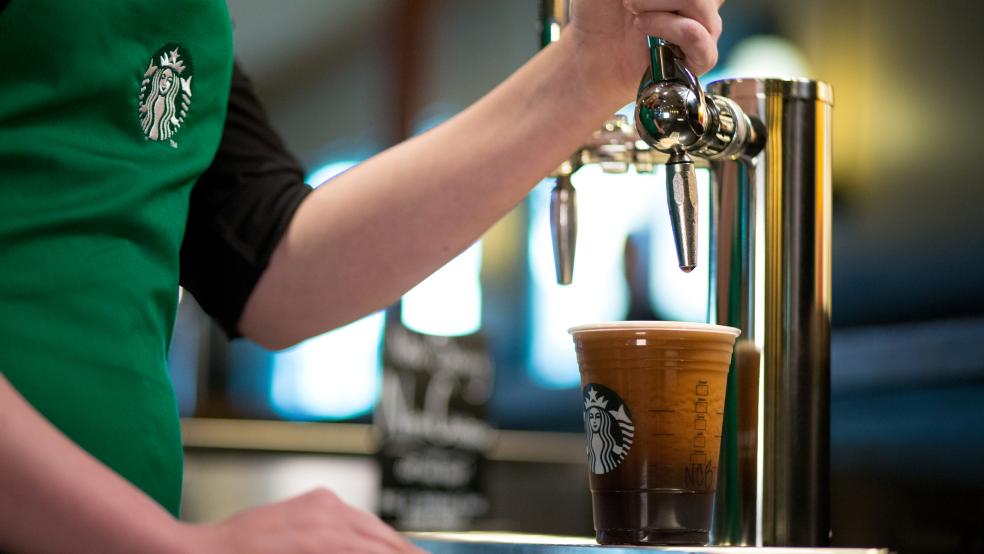For the third consecutive year, the nation’s 65 million seniors will see virtually no increase in their Social Security benefits, even as premiums for their federally funded health care and prescription drugs are expected to rise substantially.
The Social Security Administration announced on Tuesday that beneficiaries for retirement and disability programs will receive a paltry 0.3 percent cost-of-living adjustment to their monthly checks.
Related: How the Democratic and GOP Platforms Clash Over Social Security Reform
For the average beneficiary, that will mean a $5 a month increase in benefits, from $1,355 to $1,360, according to the government. For all disabled workers, that will mean a rise in monthly benefits from $1,167 to $1,171.
In the previous two years, the inflation rate and gasoline prices were so low that the government granted no cost-of-living adjustments, even as many seniors largely dependent on Social Security struggled to pay their rent or mortgage, buy groceries and cover their out-of-pocket medical costs. The last substantial COLA increase of 5.8 percent came in 2008, during the economic recovery.
Many seniors will feel even more of a pinch on their medical costs in 2017.
Roughly one in three of Medicare's 56 million beneficiaries likely will see their health care premiums rise by as much as 22 percent next year – elevating the cost to an estimated $149 per month, according to the latest Medicare Trustees report.
Related: Social Security Trustees Project Trust Fund Will Be Tapped Out by 2034
That premium hike is largely due to a quirk in the law that penalizes wealthier beneficiaries and others any time the Social Security Administration fails to approve a substantial cost of living adjustment. Medicare Part B and the Social Security trust fund are interconnected, and most seniors on Medicare have their doctor and hospital care premiums automatically deducted from their Social Security checks.
Because the federal law “holds harmless” about 70 percent of Medicare recipients from premium increases to cover unexpected rising healthcare costs that often crop up, the remaining 30 percent of Medicare Part B beneficiaries suffer the consequences by having to pay higher premiums.
Besides wealthier beneficiaries who already are paying higher, means-tested premiums, people enrolled in Medicare Part B for the first time and Medicare beneficiaries who aren’t currently collecting Social Security will feel the brunt of any rate increases, according to an analysis by USA Today. The remaining 70 percent of Medicare beneficiaries could see small increase in their Part B premiums.
At the same time, millions of seniors enrolled in the Medicare Part D subsidized prescription drug program likely will face premium increases next year that average 9 percent, according to a new analysis by the Kaiser Family Foundation. The non-partisan foundation’s study found that the average monthly premiums for the prescription drug program would increase from $38.57 this year to $42.17 in 2017 for those who remain in the same program.
Related: Harsh New Penalties for Social Security Fraud Are Coming
As was the case in previous years, average Medicare Part D premiums are expected to vary across the plans with the largest enrollment, ranging from $16.81 to $71.66 per month in 2017. Monthly premiums also vary on average across states, from a low of $31.27 in New Mexico to a high of $50.95 in New Jersey. The study warns that enrollees’ total out-of-pocket spending for costly prescription drugs could be much higher, including mounting deductibles, cost-sharing and whether enrollees’ drugs are covered by their plan.
The Kaiser study found that Part D deductibles are on the rise for 2017, and that enrollees who stay with the same drug plan will likely pay a deductible of $195 in 2017, or an average increase of seven percent from $182 in 2016.
The Social Security Act ties the annual COLA to the increase in the Consumer Price Index as determined by the Department of Labor’s Bureau of Labor Statistics. But AARP and other advocates for seniors and retirees have long argued that this price index is woefully inadequate to address need.
That’s because it only measures the spending of families who make their income from wage earners or clerical workers but not elderly households whose main source of income are pensions and Social Security. That later group tends to spend more on health care, where prices have consistently outpaced inflation. The meager COLA for 2017 also comes at a time when inflation appears to be starting to rise again and may approach the Federal Reserve Board’s 2 percent inflation target.
Related: Social Security Ruling Drives Up Medicare Costs for Millions
Democratic presidential nominee Hillary Clinton, Democratic socialist Sen. Bernie Sanders of Vermont, Sen. Elizabeth Warren of Massachusetts and scores of other liberal Democrats have endorsed proposals for expanding Social Security benefits, even as budget watchdog groups press for reforms and cuts to put the Social Security trust fund back on a more secure long-term course.
The Social Security and Medicare trustees report projects that the combined Social Security retirement and disability trust funds will be depleted by 2034 absent congressional and administration action.
Jo Ann Jenkins, chief executive officer of AARP, the leading seniors’ advocacy group, said the latest COLA adjustment was inadequate. She urged Clinton and Republican presidential nominee Donald Trump to address the problem in their third and final debate Wednesday evening in Las Vegas.
“After last year’s zero COLA, this year’s announcement doesn’t offer much help to the millions of families who depend on their Social Security benefits. Along with many groups, AARP has also asked Congress to ensure that Medicare premiums and deductibles don’t skyrocket next year.”





